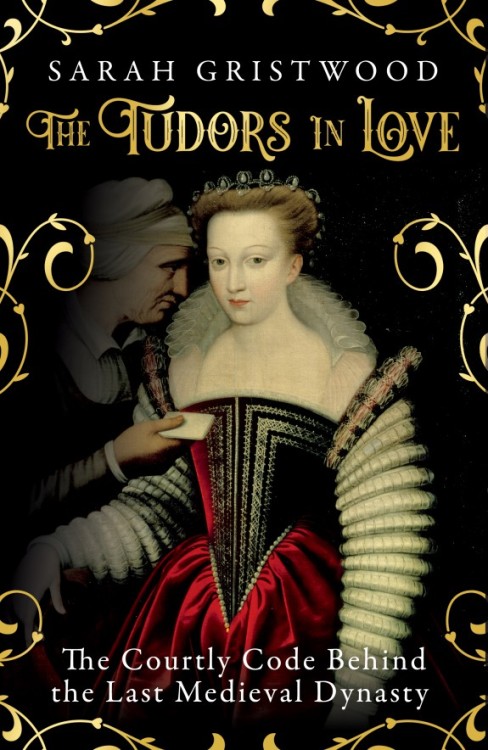#thomas boleyn
The Tudors in Love: The Courtly Code Behind the Last Medieval Dynasty, Sarah Gristwood (23 September 2021)
The dramas of courtly love have captivated centuries of readers and dreamers. Yet too often they’re dismissed as something existing only in books and song – those old legends of King Arthur and chivalric fantasy.
Not so. In this ground-breaking history, Sarah Gristwood reveals the way courtly love made and marred the Tudor dynasty. From Henry VIII declaring himself as the ‘loyal and most assured servant’ of Anne Boleyn to the poems lavished on Elizabeth I by her suitors, the Tudors re-enacted the roles of the devoted lovers and capricious mistresses first laid out in the romances of medieval literature. TheTudors in Love dissects the codes of love, desire and power, unveiling romantic obsessions that have shaped the history of this nation.Woodsmoke and Sage: The Five Senses 1485-1603: How the Tudors Experienced the World, Amy Licence (31 August 2021)
Using the five senses, historian Amy Licence presents a new perspective on the material culture of the past, exploring the Tudors’ relationship with the fabric of their existence, from the clothes on their backs, the roofs over their heads and the food on their tables, to the wider questions of how they interpreted and presented themselves, and what they believed about life, death and beyond. Take a journey back 500 years and experience the sixteenth century the way it was lived, through sight, sound, smell, taste and touch.
Usurpers, A New Look at Medieval Kings, Michele Morrical (30 September 2021)
In the Middle Ages, England had to contend with a string of usurpers who disrupted the British monarchy and ultimately changed the course of European history by deposing England\x27s reigning kings and seizing power for themselves. Some of the most infamous usurper kings to come out of medieval England include William the Conqueror, Stephen of Blois, Henry Bolingbroke, Edward IV, Richard III, and Henry Tudor. Did these kings really deserve the title of usurper or were they unfairly vilified by royal propaganda and biased chroniclers? In this book we examine the lives of these six medieval kings, the circumstances which brought each of them to power, and whether or not they deserve the title of usurper
The Boleyns of Hever Castle, Owen Emmerson and Claire Ridgway (1 August 2021)
In The Boleyns of Hever Castle, historians Owen Emmerson and Claire Ridgway invite you into the home of this notorious family.
Travel back in time to those 77 years of Boleyn ownership. Tour each room just as it was when Anne Boleyn retreated from court to escape the advances of Henry VIII or when she fought off the dreaded ‘sweat’. See the 16th century Hever Castle come to life with room reconstructions and read the story of the Boleyns, who, in just five generations, rose from petty crime to a castle, from Hever to the throne of England.
Fêting the Queen: Civic Entertainments and the Elizabethan Progress, John Mark Adrian (30 December 2021)
While previous scholars have studied Elizabeth I and her visits to the homes of influential courtiers, Fêting the Queen places a new emphasis on the civic communities that hosted the monarch and their efforts to secure much needed support. Case studies of the university and cathedral cities of Oxford, Canterbury, Sandwich, Bristol, Worcester, and Norwich focus on the concepts of hospitality and space―including the intimate details of the built environment.
Hidden Heritage: Rediscovering Britain’s Lost Love of the Orient, Fatima Manji (12 August 2021)
Throughout Britain’s galleries and museums, civic buildings and stately homes, relics can be found that beg these questions and more. They point to a more complex national history than is commonly remembered. These objects, lost, concealed or simply overlooked, expose the diversity of pre-twentieth-century Britain and the misconceptions around modern immigration narratives.
Hidden Heritage powerfully recontextualises the relationship between Britain and the people and societies of the Orient. In her journey across Britain exploring cultural landmarks, Fatima Manji searches for a richer and more honest story of a nation struggling with identity and the legacy of empire.The Dissolution of the Monasteries: A New History, James Clark (14 September 2021)
Drawing on the records of national and regional archives as well as archaeological remains, James Clark explores the little-known lives of the last men and women who lived in England’s monasteries before the Reformation. Clark challenges received wisdom, showing that buildings were not immediately demolished and Henry VIII’s subjects were so attached to the religious houses that they kept fixtures and fittings as souvenirs. This rich, vivid history brings back into focus the prominent place of abbeys, priories, and friaries in the lives of the English people.
Catherine of Aragon: Infanta of Spain, Queen of England, Theresa Earenfight (15 December 2021)
Despite her status as a Spanish infanta, Princess of Wales, and Queen of England, few of her personal letters have survived, and she is obscured in the contemporary royal histories. In this evocative biography, Theresa Earenfight presents an intimate and engaging portrait of Catherine told through the objects that she left behind.
Devil-Land: England Under Siege, 1588-1688, Clare Jackson (30 September 2021)
As an unmarried heretic with no heir, Elizabeth I was regarded with horror by Catholic Europe, while her Stuart successors, James I and Charles I, were seen as impecunious and incompetent, unable to manage their three kingdoms of England, Scotland and Ireland. The traumatic civil wars, regicide and a republican Commonwealth were followed by the floundering, foreign-leaning rule of Charles II and his brother, James II, before William of Orange invaded England with a Dutch army and a new order was imposed.
Post link










